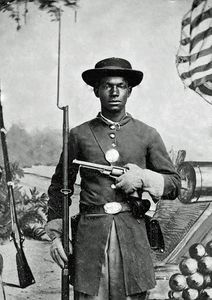
CPD (LINK)
Various workshops and sessions I have run on the subject of teaching the period study.
American Expansion: 1789-1838 (LINK)
A range of resources relevant to the expansion of the USA after 1789 and the growth and development of slavery.
The American West 1839-60 (LINK)
This section covers white expansion into the West, as well as the Indian cultures who lived on the Plains. You will also find Mormons and homesteaders in this section.
Civil War and Reconstruction 1861-77 (LINK)
As it says on the tin with this one. Material related to the outbreak of war, its course and the attempts to reconstruct America afterwards.
Conflict on the Plains 1861-77 (LINK)
This section focuses primarily on the period known as the "Indian Wars" and mirrors the developments in the East, above.
American Identities 1877-1900 (LINK)
This section looks at attempts to create a unified American culture; the growth of big business; and the impact of immigration. It also looks at continued limits to the liberty of black Americans.
Overview and Revision (LINK)
Some items which might be useful for creating a sense of period overview throughout, or for using at the end of teaching.



 RSS Feed
RSS Feed
